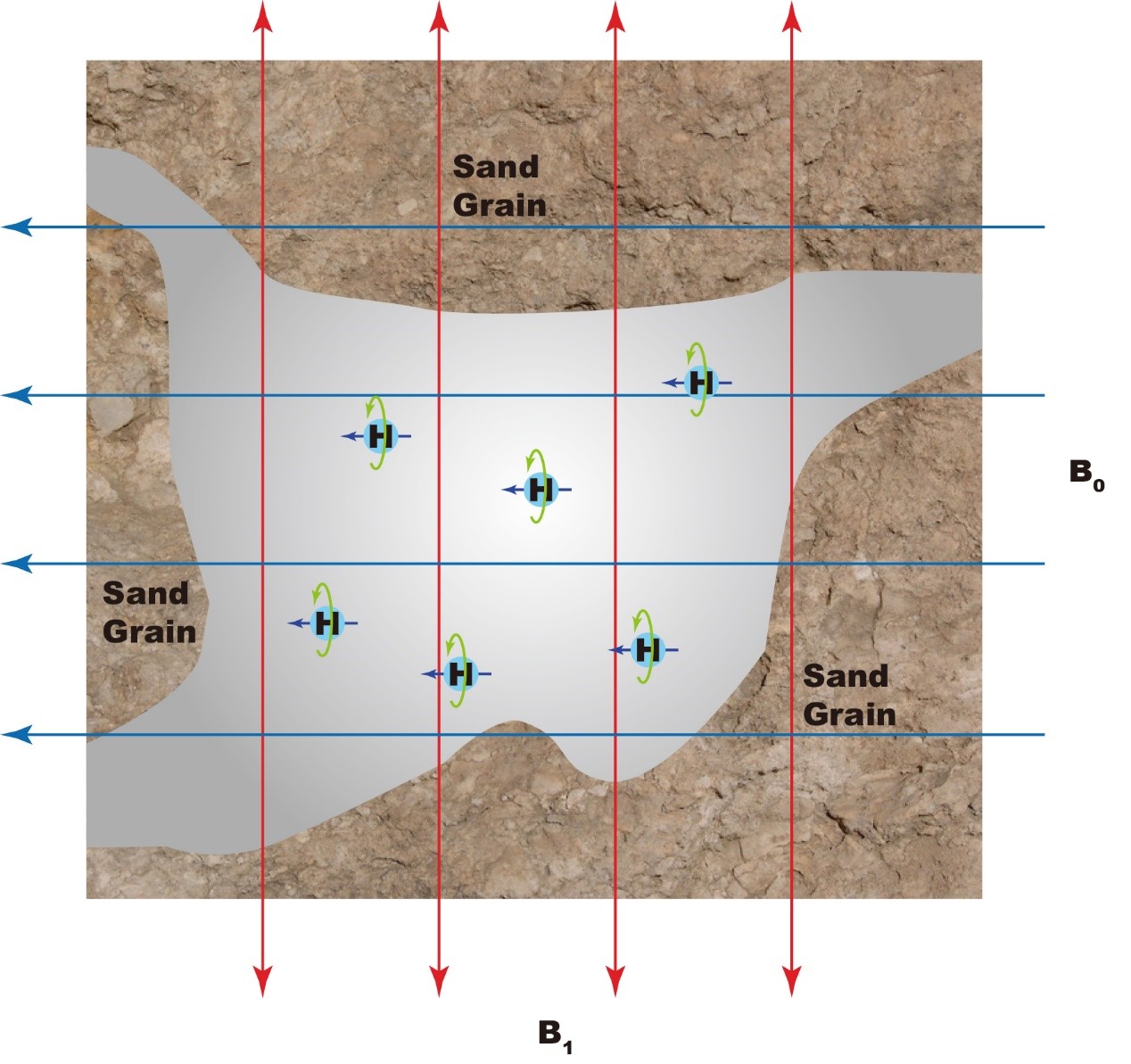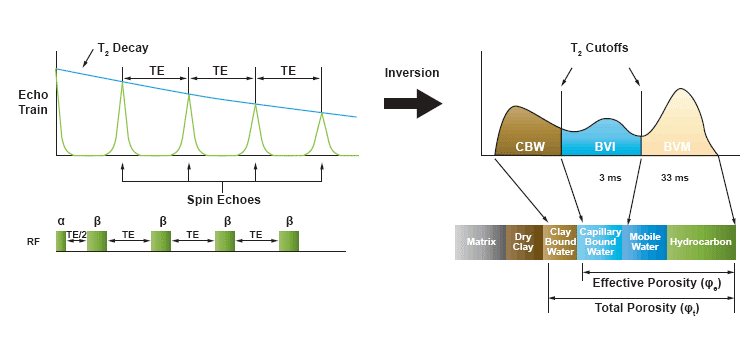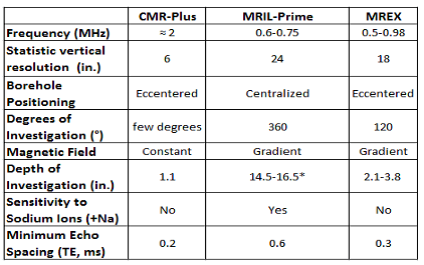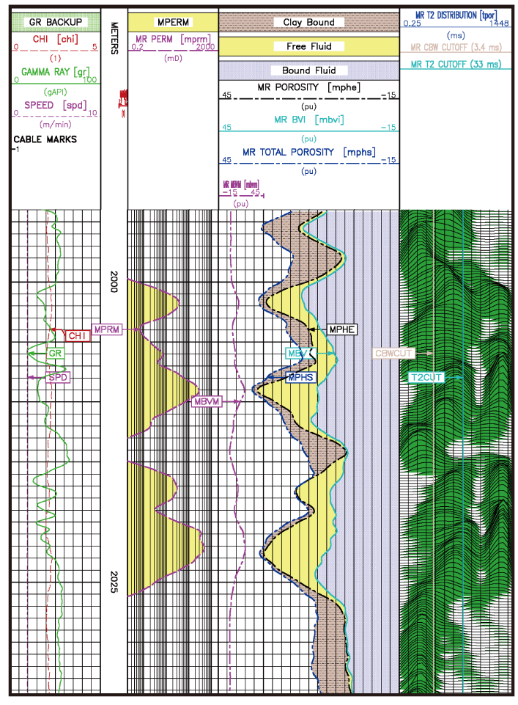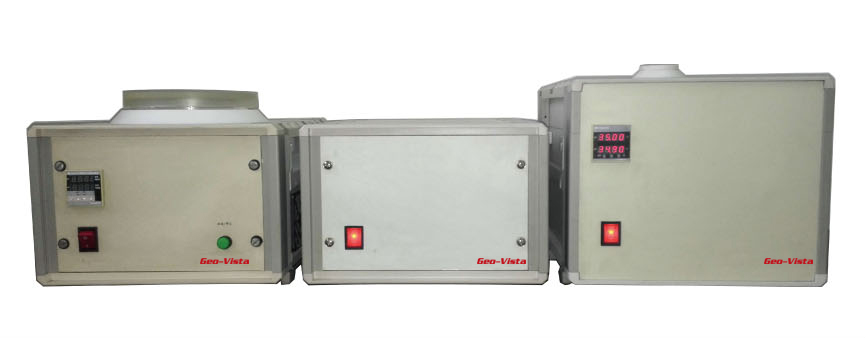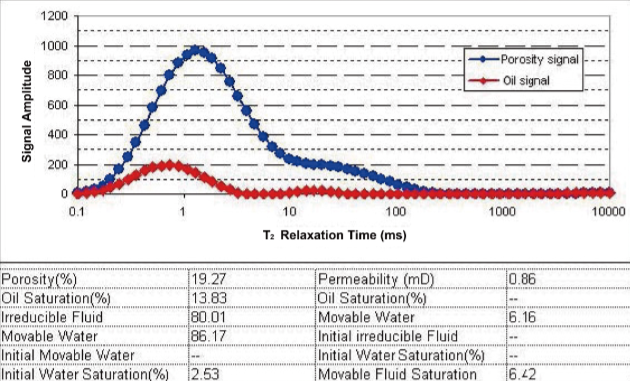
|
Acerca NMR Logging
NMR logging exploits the large magnetic moment of hydrogen, which is abundant in rocks in the form of water. The NMR signal amplitude is proportional to the quantity of hydrogen nuclei present in a formation and can be calibrated to give a value for porosity that is free from lithology effects. Uniquely, petro physicist can also analyze the rate of decay of the NMR signal amplitude to obtain information on the permeability of the formation - a crucial quantity in hydrocarbon exploration.
The most important mechanism affecting NMR relaxation is grain-surface relaxation. Molecules in fluids are in constant Brownian motion, diffusing about the pore space and bouncing off the grain surfaces. Upon interaction with the grain surface, hydrogen protons can transfer some nuclear spin energy to the grain (contributing to T1 relaxation) or irreversibly diphase (contributing to T2 relaxation). Therefore the speed of relaxation most significantly depends on how often the hydrogen nuclei collide with the grain surface and this is controlled by the surface-to-volume ratio of the pore in which the nuclei are located. Collisions are less frequent in larger pores, resulting in a slower decay of the NMR signal amplitude and allowing petro physicist to understand the distribution of pore sizes.
The hydrogen protons in the pore space are first polarized by a static magnetic field (B0), then subjected to an oscillating magnetic field (B1) oriented perpendicular to B0.
The echo train data is processed using an inversion technique to create a T2 spectrum. The T2 spectrum represents the distribution of T2 decay rates at the depth the data was acquired. For 100% water-saturated rocks, T2 decay rates are directly related to the pore sizes present in the formation; hence, the T2 distribution is also representative of the pore size distribution. Fluids contained in smaller pores have faster decay rates than fluids contained in larger pores, enabling the T2 spectrum to be partitioned by pore size into volumes of clay-bound water (CBW), bulk volume irreducible (BVI) and bulk volume movable (BVM). T2 cutoffs are used as boundaries for the partitions. Typical T2 cutoffs used are 3 ms for CBW and 33 ms for BVI. In reservoir intervals at irreducible water saturation (Sw, irr), BVM is a direct measurement of the hydrocarbon storage capacity of the reservoir. The T2 relaxation times of BVM, which may be on the order of seconds, are representative of the bulk properties of the fluid present in the pores and can be used to help identify the fluid type. The area under the T2 spectrum represents the total volume of fluid present in the formation, or the total porosity (ft). Effective porosity (fe) is calculated by summing BVI and BVM. NMR permeability may be derived using other techniques upon client request. The Coates-Timur model which is an empirically derived relationship between φe, BVI and BVM has proven to be a good indicator of permeability in clastic but, for accuracy, should always be calibrated to core permeability.
NMR Data Provide Answers For: Formation Evaluation
• Effective and total porosity
• Movable water and bound water
• Permeability and calibrated permeability
• Pore size, micro porosity and vugs
• Grain size distributions, rock facies and rock quality
Hydrocarbon Typing and Quantification
• Low-R, low-contrast pay
• Water, gas, oil saturations or flushed zone saturations
• Oil viscosity and GOR
• Radial saturation profile
• Characterizing unconventional reservoirs such as gas shale, tar and heavy oil>
NMR Logging Tools Comparison: 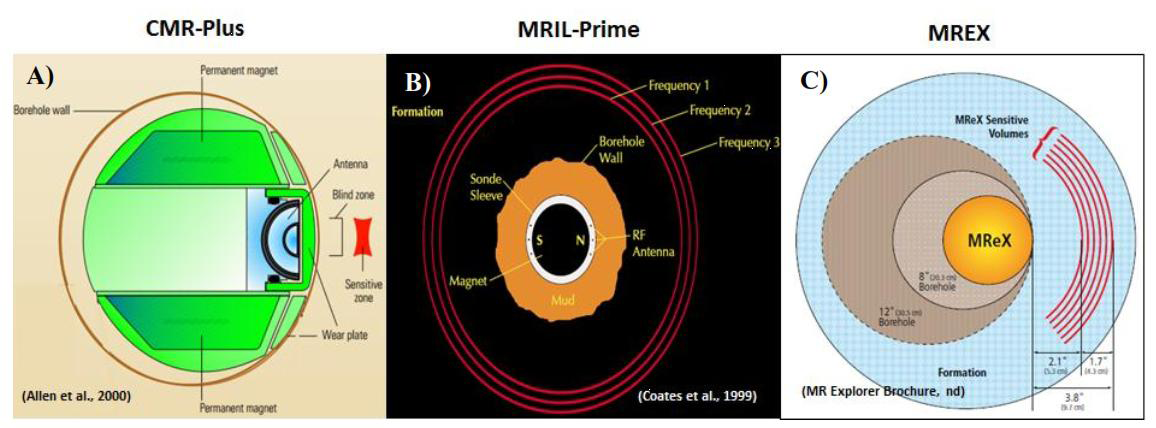
NMR-M Logging Tool: Benefits: Less rig time through:
• Faster logging speeds
NMR Rock Sample Analyzer (NRA) Introduction: NMR technology provides lots of excellent functions: more detecting parameters, no shape requirement, different parameters in one sample, etc. The instrument shape is small and the weight is light. Therefore, it is suitable for building up a mini-laboratory for geological service. NRA: Curves: |

